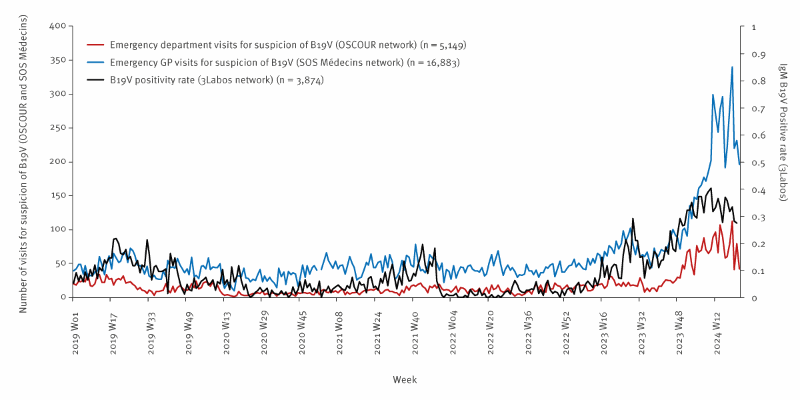Human parvovirus B19 (B19V) is a DNA virus responsible for a wide range of clinical symptoms from asymptomatic infections to very rare fatal events.
Immunocompromised patients and patients with red blood cell disorders (e.g. sickle cell disease) are more likely to develop severe forms including death. Infection of pregnant women can cause in-utero death. Seasonal outbreaks of B19V are known to occur every 3–4 years in late winter and early spring [1].
Here we describe an ongoing and unusually large outbreak of B19V infections using laboratory-confirmed data from reference laboratories (3Labos network), clinical data from emergency departments (ED-OSCOUR network) and emergency general practitioners’ (GP) associations (SOS Médecins network (SOSM)), along with mortality data from death certificates in France.

